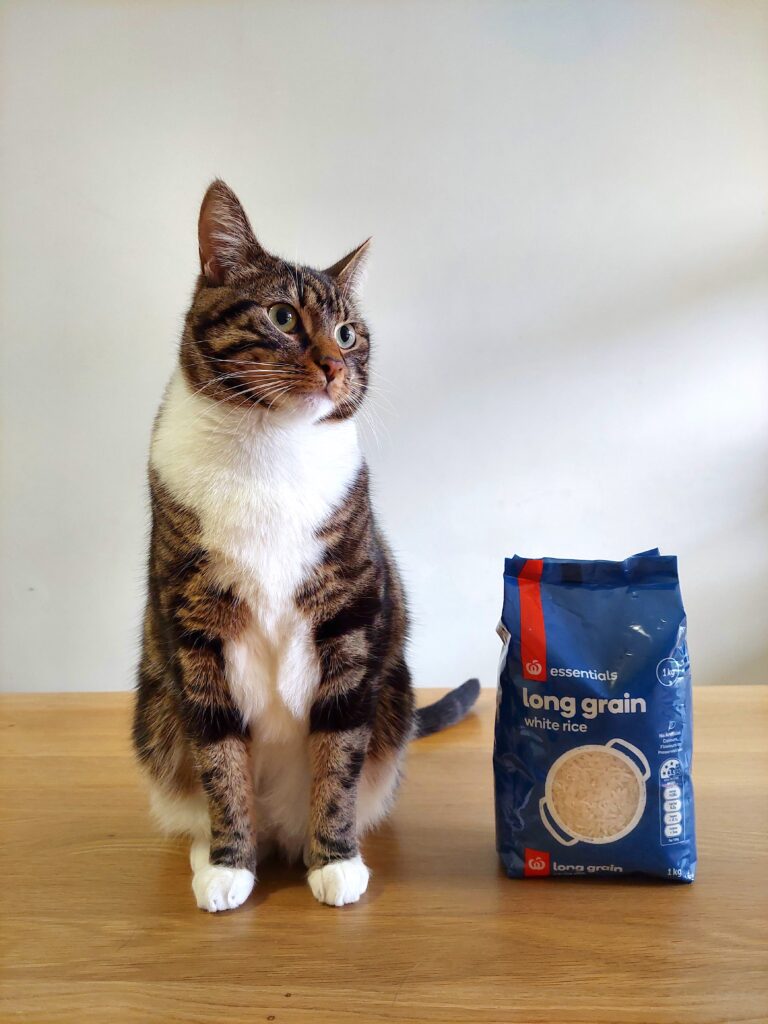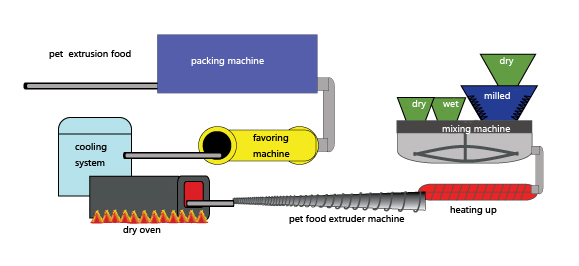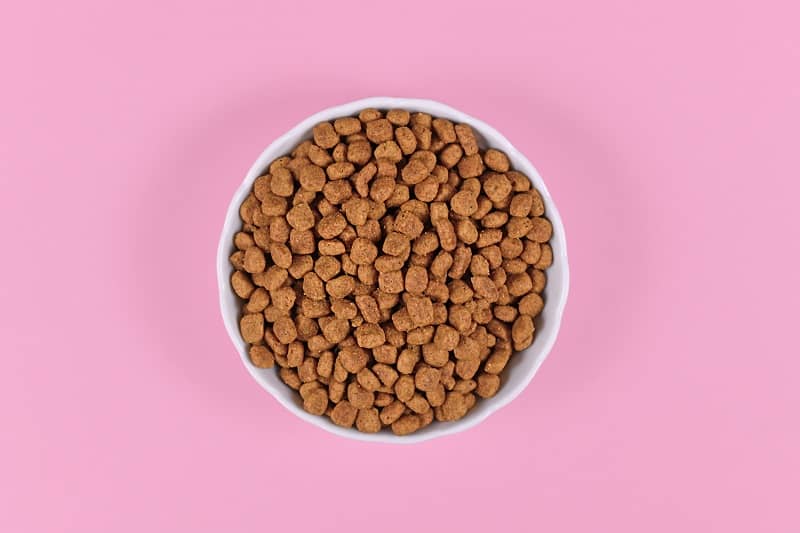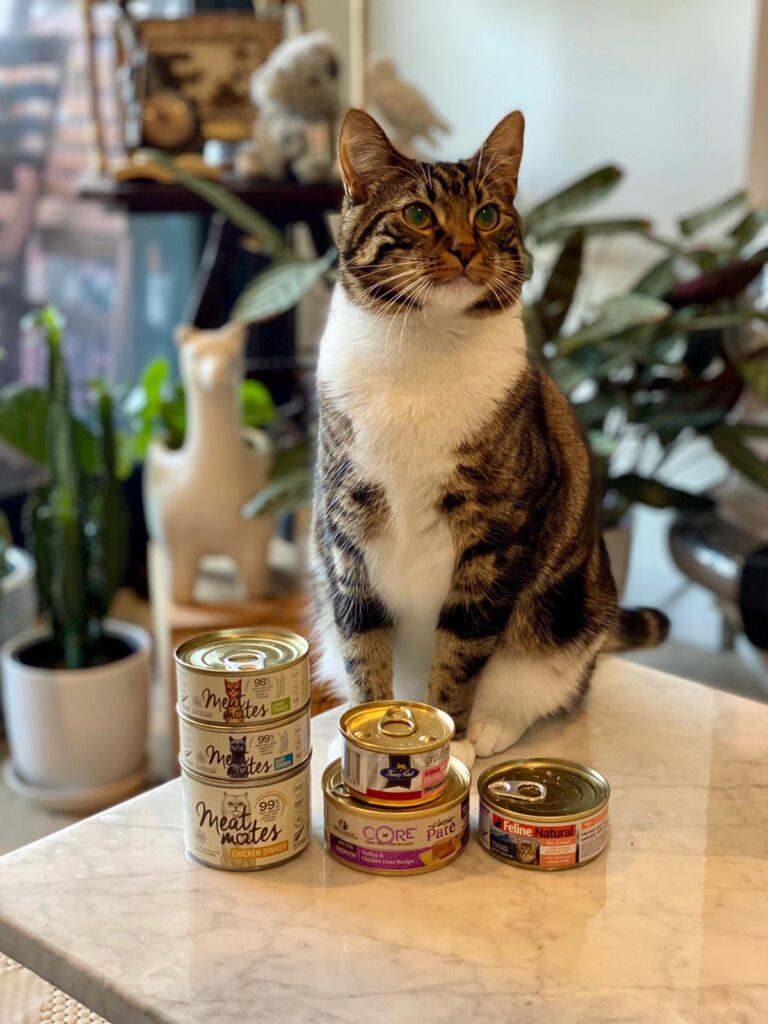Last Updated on July 8, 2023 by Indy the Cat
Dry food is the most commonly available cat food in supermarkets and often pet stores. It’s affordability, convenience and ability to store are unmatched compared to other types of cat food. So, what’s the problem?
For cats, there is probably no topic more controversial than dry cat food. If you ask the internet for their opinion on cat food, you will receive thousands of different answers. And the one topic that still divides the cat community like no other is people’s opinion on dry food.
Dry cat food has been around for a long time. Millions of cats eat it worldwide and many have lived long healthy lives. So why is it so controversial? We’re going to dive into some of the concerns around dry food and understand what it can mean for your cat’s diet and health. As part of our mantra, we want to provide you with as much information as possible, so you can make an informed decision about your own cat’s diet.
Dry food is well… dry
This should go without saying, but dry food is inherently dry. This is particularly important because cats have poor thirst drive and naturally try to obtain the majority of their hydration through their food. In the wild, this would come through their natural prey such as small animals.
Conventional dry cat food is the exact opposite of that. It is a highly processed dehydrating form of food. In human terms, you might compare this to eating something very dry, like some really dry biscuits. After eating those biscuits, you would feel the need to counter the dryness by drinking water. On the other hand, if you ate something moisture rich like pasta with a sauce, you may not feel the urge to drink water.
This works fine for humans as we have both the natural and cognitive ability to understand that we are “thirsty”. Since drinking water is less natural for a cat, they are less aware of their need to drink enough water, even after consuming a dehydrating food. This can lead to dehydration or other health issues down the line.

To avoid this problem in the first place, it is better to focus on a moisture rich diet – e.g. a primarily wet food diet. Adding additional water beyond the quantity in the food will still be beneficial and we always recommend it.
Dry food ingredients tend to be problematic
We haven’t reviewed any dry foods yet here at indyreviewscatfood.com, but we will cover some very soon. Standard kibble from even some of the biggest brands in the pet food industry tends to be of lower quality than the average wet food.
What does lower quality mean? In dry food, you will more commonly find fillers, use of grains like corn or rice, lower quality protein sources and/or less protein than the average wet cat food. Let’s take a quick look at the ingredients of one product line from one of the biggest so called “premium” cat food brands. This product will remain unnamed, but you are welcome to try to figure out what it is.
Dry food ingredients – a quick analysis
Dehydrated poultry protein, rice, vegetable protein isolate, wheat, maize, animal fats, wheat flour, hydrolysed animal proteins, vegetable fibres…. (the list continues from here)
It’s interesting that the first ingredient is poultry protein. Two things stand out. One is that they mention poultry as opposed to a specific type of poultry e.g. chicken or turkey. This would allow for things like substitutions based on what is available and possibly what is cheaper or less optimal. It’s also odd that it’s mentioned as protein rather than simply the meat itself. Moving on, we have rice as the second most abundant ingredient. While rice has digestive benefits, it’s not part of a cat’s natural diet nor is it nutritious. While the company may argue otherwise, it’s essentially filler.

The third ingredient is vegetable protein isolate, which we can say is a vegetarian source protein. Not ideal as we know cats are obligate carnivores but not uncommon even in higher end foods. The fourth ingredient is wheat, which will elevate the carbohydrate content far beyond what a cat needs. That’s only the top four ingredients, but we can clearly see a pattern developing. Have a look at the vast majority of dry cat food and you will see a similar story despite how pretty the packaging may look.
Dry food is the least natural type of food
There’s no doubt that dry food is the least natural type of food you can feed your cat. Whether you think that’s a good thing or not may be more subject to opinion. Cats ultimately do not choose their own food. You as the owner make that choice based on other factors such as budget or convenience (more on this later).
So what is considered the most natural type of food for a cat? Well either ancestrally or in the wild, cats are hunters and obligate carnivores. For smaller cats, that may be consuming animals like rodents or a small bird. In the modern age, cat owners look to the raw diet for inspiration. The idea is to mimic the type of diet that cats would naturally eat (in essence, all parts of the animal – from muscle meat to organs and bones).
The case for a raw diet
While we are not experts in raw diet feeding, we are aware of its benefits and see it as a valuable part of a cat’s diet should you choose to include it. Indy does eat some raw meat as a small part of his diet. Please note that feeding a raw diet requires careful planning and education around the topic. Improper feeding of a raw diet can lead your cat to be nutrient deficient and lead to health problems. Please do not develop a DIY raw diet for your cat without proper information and possibly consultation from a professional.
If raw food is the most natural food for cats, why is dry food on the other side of the spectrum? And where does wet food fit in? You can probably guess that wet food fits somewhere in the middle, but let’s examine the first question.
How dry food is made
A typical dry food begins with grinding up its raw ingredients. For the protein, this may be actual pieces of human grade meat or things like by-product. Once ground up, the meat is cooked under very high heat and processed into meal. It will then be combined with additional ingredients such as vitamins and supplements to flush out its nutritional profile.
To get it to its next stage, it will be cooked again under another high heat process until it is a doughy mixture. The mixture from this point gets processed again (with heat) and formed into the shape of the kibble. Once in the kibble form, it needs to be dried out so guess what? It’s heated again until it is a dry piece of kibble holding its shape.

Picture Credit: https://www.extrusion-machines.com/the-working-process-of-the-pet-food-extruder-machine/
As you can see, this type of manufacturing requires a lot of processing to get to its final kibble form. Since the final form doesn’t even look or smell like meat anymore, companies often need to spray/add flavouring to the kibble as a final step to make it more appetising to cats.
Ultimately, this commercial type of dry food was created for the convenience of humans, not for the benefit of cats. It is a process that can be mass produced and stored easier than most wet food. After all, isn’t it easier to scoop out some dry food knowing that you can also leave it out without it spoiling quickly? Even cat food dispensers are only built to work around dry food because of how preserved and robust the food is.
As humans, we are starting to take notice of all the unnatural food we consume ourselves. Why should our cats be any different?
The case for health issues
If a cat owner has been feeding dry kibble to their cats all their life, they will often find it hard to change habits. This is especially true if none of their cats developed major health concerns and lived long healthy lives. And that is in fact, very possible as there are many cats in the world that have followed this diet and ended up living long healthy lives. Cats are incredibly resilient and as such, eating primarily dry food does not mean they will not live long and healthy lives. Of course, like all health risks, other factors will play a role such as genes and lifestyle.
Urinary Tract Infections
One of the most common concerns for cats is developing a urinary tract infection (UTI). As mentioned earlier, there are a number of factors that can attribute to health issues such as UTIs. Factors may include diet, lifestyle and general health (e.g. obesity) issues. There are considerable studies that show that a primarily dry food diet can increase the risk of a UTI for cats. One such study shows that it can be as much as 2.64 times more likely to develop a UTI with a dry food diet.
Of course, there are always cases for the other side, e.g. articles that suggest dry food do not have any significant impact on a cat’s likelihood of developing a UTI. However, there are more articles and research showing some correlation and increased risk on the negative side.

Note: This is not specific to Purina as many brands offer such a product.
With that in mind, it’s obvious that research on understanding feline nutrition and health is still evolving (as with most scientific fields). As Indy’s guardian, we believe it’s important to keep up with new knowledge and advice. Upon considering the pros and cons of providing dry food to Indy, we have opted to limit the type and amount of dry food he consumes on a regular basis.
We’ve discussed a variety of different concerns when it comes to dry food diets today. We hope this information is helpful in making the best informed decisions for your feline love ones’ nutritional needs.
If you spot an error in this article, please do not hesitate to let us know!



Pingback: Ziwi Peak Chicken – The Best Cat Food Reviews (2022)
Pingback: Ziwi Peak Air Dried Chicken Review – Still the best? (2022)
Pingback: Everything to Know About Building a Great Feeding Routine
Pingback: Kit Cat Purée Chicken & Scallop – The Best Cat Treat Reviews
Pingback: How to Feed Kittens – 5 Best Feeding Tips for Kitten -
Pingback: Ziwi Peak Mackerel – The Best Cat Food Reviews (2025) - indyreviewscatfood.com